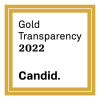
This blog post was written by Monica Reu, LCSW, CADC, a Behavioral Health Therapist at the Beloit Area Community Health Center.
Do you want to have better thinking?
It’s safe to say that most people do, especially after the year 2020. Below are some common forms of negative thinking, also call cognitive distortions and some tips to change them.
A Brief History
Aaron Beck first proposed the theory behind cognitive distortions and David Burns was responsible for popularizing it with common names and examples for the distortions.
They are habitual ways of thinking that are often inaccurate and negatively biased.
Cognitive distortions usually develop over time in response to adverse events. Identify which ones you find yourself using and practice the ways to challenge them.
Popular Distortions & How to Challenge Them
1. Black and White Thinking
This is also known as all or nothing thinking. For example, we must be perfect or we are a failure — there is no middle ground. You place people or situations in “either/or” categories, with no shades of gray or allowing for the complications of situations and people. If your performance falls short of perfect, you see yourself as a total failure. Think of the movie Ricky Bobby – “If you’re not first, you’re last”.
To combat this, identify the middle-ground or grey area of your thoughts. Ask yourself, am I thinking extreme? If so, be flexible in your thinking even if you don’t believe the opposite thought right away.
2. Overgeneralization
In this cognitive distortion, one will come to a general conclusion based on a single incident or a single piece of evidence. If something bad happens only once, you expect it to happen over and over again. A person may see a single, unpleasant event as part of a never-ending pattern of defeat.
Rather, don’t assume that what you know fits all people and all situations. While your knowledge may fit in certain situations, also actively look for times when it does not fit. Be OK and open to not knowing all the facts.
3. Jumping to Conclusions/Fortune-Telling
This happens when you know what others are feeling and why they act the way that they do without saying so. Specifically, this occurs when we “know” how people are feeling towards us. For example, when walking down the street and you see a friend on the other side of the road. You wave and say hi but they don’t respond. You automatically think they are angry with you.
In that moment, you can focus on what you can do to efficiently cope with your situation or problem. Stay in the moment. Then look for the facts and other alternatives. Is it possible that your friend didn’t hear you? Were they wearing headphones and you did not see them? Next time you see your friend, ask.
4. Magnification
This happens when you take a small thing and exaggerate it into something that is very large. It’s like looking at a guppy through a magnifying glass and seeing a whale. Magnification typically amplifies our feelings.
With this, it is also important to not minimize (another distortion). Simply observe and describe the situation with facts – be objective. Also, try not to add or subtract details.
5. Blaming
With blaming, we tend to other people responsible for our pain or take the other track and blame ourselves for every problem. For example, “Stop making me feel bad about myself!” Nobody can “make” us feel any particular way — only we have control over our emotions and emotional reactions.
Remember, while someone or something may be responsible for a problem, we have to choose in how to respond. Our response then gives us power and control on how to influence situations and therefore, our lives.
6. Should Statements
Should statements focus on judging rather than reality. We have a list of ironclad rules about how others and we should behave. People who break the rules make us angry. When a person directs should statements toward others, they often feel anger, frustration, and resentment.
We feel consequences also when we violate these rules. For example, “I really should exercise. I shouldn’t be so lazy.” The consequence to this is guilt. Musts and oughts are also offenders.
To challenge, focus on what is – the reality, rather than what it “should be”. Work on being more compassionate with your self-talk and look for the positives.
While only 6 were mentioned in today’s blog, there are many more thinking errors that conflict people. Below are some helpful links for identification of additional cognitive distortions and how to challenge. Which mode of thinking will you challenge today?
References
- https://positivepsychology.com/cognitive-distortions/
- https://www.healthline.com/health/cognitive-distortions#types-of-distortions
- https://www.mindfulnessmuse.com/cognitive-behavioral-therapy/identify-common-cognitive-distortions
- Tips to challenge adapted from The Expanded DBT Skills Training Manual, 2nd Edition













